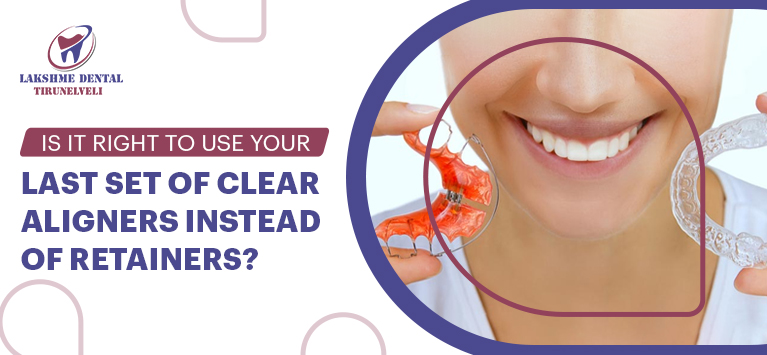
Aligner Attachments: When Do You Need Them?
Clear aligners, used by dentists to straighten teeth, are a dream come true for many. They offer a smooth, comfortable alternative to metal braces. But sometimes, aligners alone aren’t enough to achieve your perfect smile. That’s where aligner attachments come in. Not everyone needs them, but when you do, they play a crucial role in your treatment. Let’s explore why and when these attachments are needed and how they help your teeth straighten more effectively.
What are Aligner Attachments?
Aligner attachments are small, tooth-coloured growths bonded to your teeth. They contain dental resin, a material that is heavily used in fillings. Imagine these attachments as handles bonded to your teeth. Plus, they help the aligners get a better hold around your teeth and create the correct pressure to cause them to move.
Why are Attachments used?
Sometimes, even the best clear aligners just aren’t enough to push those particular movements into the teeth. Your teeth may need to rotate, shift, or even move up or down. In these situations, attachments act as little levers that the aligners can push or pull. Key benefits of aligner attachments are:
- Enhanced Aligner Fit: They sit more firmly on the teeth.
- Improved Tooth Movement: They help guide teeth in more complex directions.
- Better Overall Results: You may achieve a straighter smile more effectively.
When Do You Need Attachments?
Not everyone using clear aligners will need attachments. It all depends on how your teeth need to shift during treatment. Below, look at the common situations where attachments are usually required:
Complex Tooth Movements
If your treatment involves more than simple straightening, you might need attachments. Movements like rotations, pulling down impacted teeth, or fixing a deep bite often require these extra tools.
- Intrusion or Extrusion: For teeth that need to be moved up or down, attachments make sure the aligners can apply the right force.
- Tilted Teeth: Attachments help aligners grip and tilt teeth that are leaning forward or backward.
- Rotating Teeth: If a tooth is turned the wrong way, attachments help rotate it into place.
In these cases, traction may not be enough while using the aligner alone. Attachments give that additional grip to move appropriately.
How Are Attachments Placed?
Attachments are a straightforward process. Here’s how it usually works:
- Cleaning the Teeth: Your orthodontist is going to clean the surface of your teeth so that the attachment will bond properly.
- Placing the Resin: The tooth-coloured resin then adheres directly to your teeth in small, custom-made shapes.
- The Resin Activation: The specific light activates the resin into a hardened and durable state that will not weaken during the treatment process.
- Aligner Fitting: Lastly, you will wear your aligners over the attachments. They will hug all the way around the attachments snugly.
It’s pain-free and done very quickly with no drilling involved.
Will Attachments Feel Any Different When Wearing Aligners?
Since attachments are small and tooth-coloured, they blend into your teeth. But you will likely notice a bit of a difference when you first get them, which are:
- Feeling: Your aligners will probably feel a little tight at first. This is because they’re working with the attachments to move your teeth. Most people get used to this after a few days.
- Comfort: The attachments might cause mild irritation to your gums or lips initially, but this usually fades as you adjust.
Most people find the initial discomfort subsides quickly as the mouth gets used to the new alignment.
Do Attachments Impact Daily Life?
Attachments won’t change much of your routine, but here are a few things to keep an eye out for:
Cleaning and Oral Care
Attachments require more thorough and careful oral hygiene. Here’s what you need to do:
- Brushing: Brush around attachments thoroughly so that plaque does not build up.
- Flossing: Do not assume you do not need to floss attached appliances. They may sometimes make it more difficult to reach over the attachment in between the teeth.
- Aligner-Friendly Products: Some find that it makes it easier if they change their cleaning tools to aligner-specific ones, like a special toothbrush or flosser.
With a bit of care, you can keep your teeth and attachments clean and healthy throughout your treatment.
Eating with Attachments
The attachments do not need to be removed when you eat, but these simple guidelines should be followed:
- Avoid Hard or Sticky Foods: These can damage or dislodge the attachments.
- Hydration: Drinking water regularly will cleanse your mouth of food bits, hence keeping it feeling fresh.
Be aware of whatever you are eating. Doing this can protect your attachments and keep you on track to a successful treatment!
Can Attachments Be Removed?
Yes, aligner attachments are not permanent! Once your treatment is over, they’ll be removed by your orthodontist. Key points:
- Rapid Removal Process: The attachments are filed down smoothly and polished off.
- No Damage: Teeth will regain their smooth surface without any destruction because of the resin.
There’s no need to worry; your teeth will be bump-free throughout after completing your aligner treatment journey.
Final Thoughts
Aligner attachments seem like a minor component of an orthodontic treatment. Meanwhile, they actually contribute a great deal to ensuring that your teeth change position as they ought to. It is only a matter of case complexity whether you require these attachments or not. They won’t interfere much with your day-to-day activities and can be removed at the end of treatment. Now, next time your orthodontist talks about aligner attachments, you’ll know why they’re important and how they might help you get that smile you’ve always wanted!
















